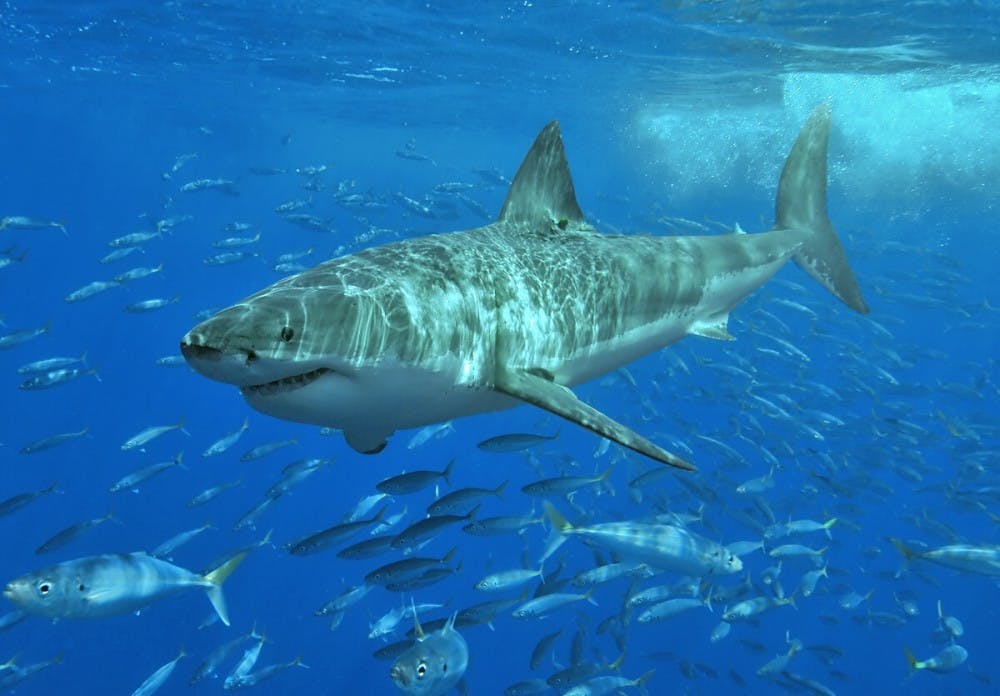A new study has found a drastic decline in great white shark sightings around Seal Island in False Bay, south of Cape Town, South Africa.
Researchers from the University of Miami Rosenstiel School of Marine and Atmospheric Science and the Apex Shark Expeditions have been monitoring the waters for sharks around Seal Island for 18 years. They published their research in the journal Scientific Reports on Feb. 13.
Seal Island is known for its large population of Cape fur seals, which are a common prey of great white sharks.
Because of this, the site is famous for sightings of great white sharks diving out of the ocean to catch their seal prey.
Great white sharks are one of the largest and longest living sharks species. Adults can weigh more than 2.5 tons, grow up to 20 feet long and have a lifespan of 70 years.
The study lasted for 18 years and involved over 8000 hours of observation, with researchers sighting a total number of 6,333 individual white sharks and 8,076 attacks on seals in this time.
While the numbers for great white shark sightings were relatively stable from the start of the study in 2000 to 2015, they have significantly dropped since then.
The study’s lead author is University of Miami Research Associate Professor Neil Hammerschlag. Hammerschlag is also the director of the Shark Research and Conservation Program at the University of Miami.
He noted why the sudden change in great white shark populations may be occurring.
“In 2017 and 2018, their numbers reached an all-time low, with great whites completely disappearing from our surveys for weeks and months at a time,” he said according to ScienceDaily.
Currently, great white sharks are classified as vulnerable by the International Union for Conservation of Nature.
The reason for the great white’s disappearance from this area is still unknown.
One theory is the arrival of killer whales in False Bay with a particular feeding technique.
Killer whales are the only known species that hunt great whites.
Another study published earlier this year documented instances of killer whales preying on sharks in False Bay and selectively feeding on their liver.
Other theories include over-fishing in the region or habitat loss that drove the great white sharks away.
Whatever the reason may be, the loss of the great white sharks has provided a valuable opportunity for researchers to observe the changes in the ecosystem following the loss of an important apex predator.
While great white sharks have been disappearing from Seal Island, an unexpected species has taken the reigns as the region’s new apex predator.
Normally seen in the kelp beds inshore near Miller’s Point 18 kilometers away, sevengill sharks were spotted for the first time at Seal island in 2017. Sevengill sightings in the study have been increasing ever since, coinciding with the periods of great white sharks disappearance.
Sevengill sharks are known as living fossils, due to their relatedness to similar sharks from the Jurassic period.
As their name implies, sevengill sharks are unique for having seven slits for their gills instead of five.
These sharks are preyed on by great whites, but like great whites, they also prey on seals. The loss of their predator and competitor gives rise to a new spot for the sevengill sharks at the top of the food chain at Seal Island.





